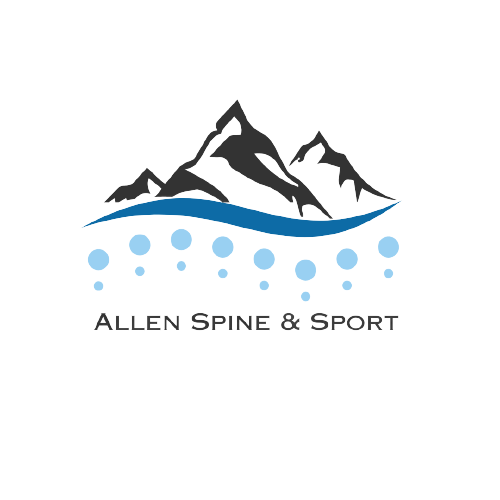Conservative Treatment of Achilles Tendonopathy
The “Achille’s heel” can very often live up to its reputation as a vulnerable weak link, especially for athletes involved in repetitive loading movements such as running and jumping. Have you had pain or dysfunction in your foot, heel, lower leg or even moving up the kinetic chain to the knee or hip? Your Achille’s tendon may be part of the problem!
Here’s something to put it in perspective. According to Scott Douglas of Runner’s World, out of a group of 933 new runners, 254 met the definition of having a running injury during their first year. Of those injured runners, 12% had either Achilles tendinitis/tendonopathy or a soleus injury, which is one of the three muscles that forms the Achilles tendon and will often lead to tendonopathy. To cite another specific example, individuals with a tight gastrocnemius muscle (1 of the other 3 muscles that become the Achilles tendon) are 3 times more likely to develop a running injury. Running isn’t the only sport that leads to overuse of Achilles tendon. Any sport involving explosive movements of the lower body can do so, such as volleyball, soccer, basketball, football, jumping and more.
The Achille’s tendon, or more properly named calcaneal tendon, is a thick tendon made up of 3 muscles (4 muscle bellies) coming together. These are the “calf” muscles or properly termed triceps surae. The calcaneal tendon attaches at the calcaneus, or heel bone. The 3 muscles are gastrocnemius (medial and lateral muscle bellies), soleus and plantaris. Plantaris and gastrocnemius cross the knee joint and therefore are more susceptible to tightness or injury from repetitive knee stress. That repetitive stress coupled with predisposing tightness and static postures (desk job, prolonged sitting, deconditioning, etc.) can lead to a condition called Achille’s tendonopathy. Tendonpathy refers to degeneration or chronic stress to the tendon and is what happens over time with repetitive overuse. However, even with normal stress, improper joint mobility and movements patterns can lead to repetitive stress to the tendon. Regardless of the cause, our job as chiropractors is improve the mobility of the areas that are tight and stiff, stabilize the areas that are weak or inactive, and give progressive loading exercises to strengthen and prevent the problem from coming back.
There are two types of Achille’s tendonopathy: insertional and mid-substance. As the name implies, insertional Achille’s tendonpathy refers to degeneration or overuse at the point where the tendon inserts on the calcaneus. Mid-substance Achille’s tendonopathy refers to degeneration or overuse in the middle area of the tendon, between where the muscles become the tendon and where the tendon inserts on the calcaneus. The only difference in treatment between the two is the location at which we do our soft tissue techniques and how we prescribe our loading and strengthening exercises.
Treatment in the office typically entails joint manipulation, instrument assisted soft tissue mobilization (IASTM) and/or dry needling, DNS stabilization exercises and eccentric calf raises to be educated and done at home in between treatments. Joint manipulation is our best tool to immediately improve the motion in specific areas that aren’t moving. Typically with Achilles tendinitis we can expect stiffness in the mid-foot and posterior hip capsule, as well as specific areas in the spine that need to contribute to the overall movement pattern. When a joint or group of joints isn’t moving well, your brain is being quite literally robbed of that joint information and is unable to fully control the correct movement pattern. Joint manipulation is also our best tool, when appropriately applied, to create an almost immediate reduction in pain in certain areas. Taking advantage of that improved mobility, DNS exercises are the most powerful tool to neurologically improve movement patterns and prevent the injury from coming back. If you really want to get to the root of the problem and treat the cause, DNS is 100% the way to go.
The at-home loading and strengthening exercise is eccentric calf raising. Eccentric refers to a slow voluntarily controlled lengthening of the muscle and tendon followed by a quicker concentric shortening of the muscle and tendon. This is where it really matters between insertional and mid-substance Achilles tendonpathy. You need an elevated surface such as a step. You will have the involved leg’s toes up on the elevated surface and will perform eccentric calf raises from:
1. The level of the step for insertional tendonopathy
2. Below the level of the step for mid-substance tendonopathy
The eccentric calf raises are to be performed in such a manner that you take 3 seconds to lower down and 1 second to raise up – “down for 3, up for 1.” Loading the tendon in a controlled fashion is vital component to the treatment protocol for Achilles tendonopathy. I prescribe 3 sets of 15 eccentric calf raises per day. Stay tuned for more informational blogs and videos!
Dr. Forrest Allen is a sports chiropractor and co-owner at Allen Spine and Sport. He has a passion for integrating spinal and extremity joint manipulation, manual therapies like dry needling, fascial manipulation, etc., and rehabilitative exercises founded in Dynamic Neuromuscular Stabilization (DNS). Visit our website and give our office a call!


